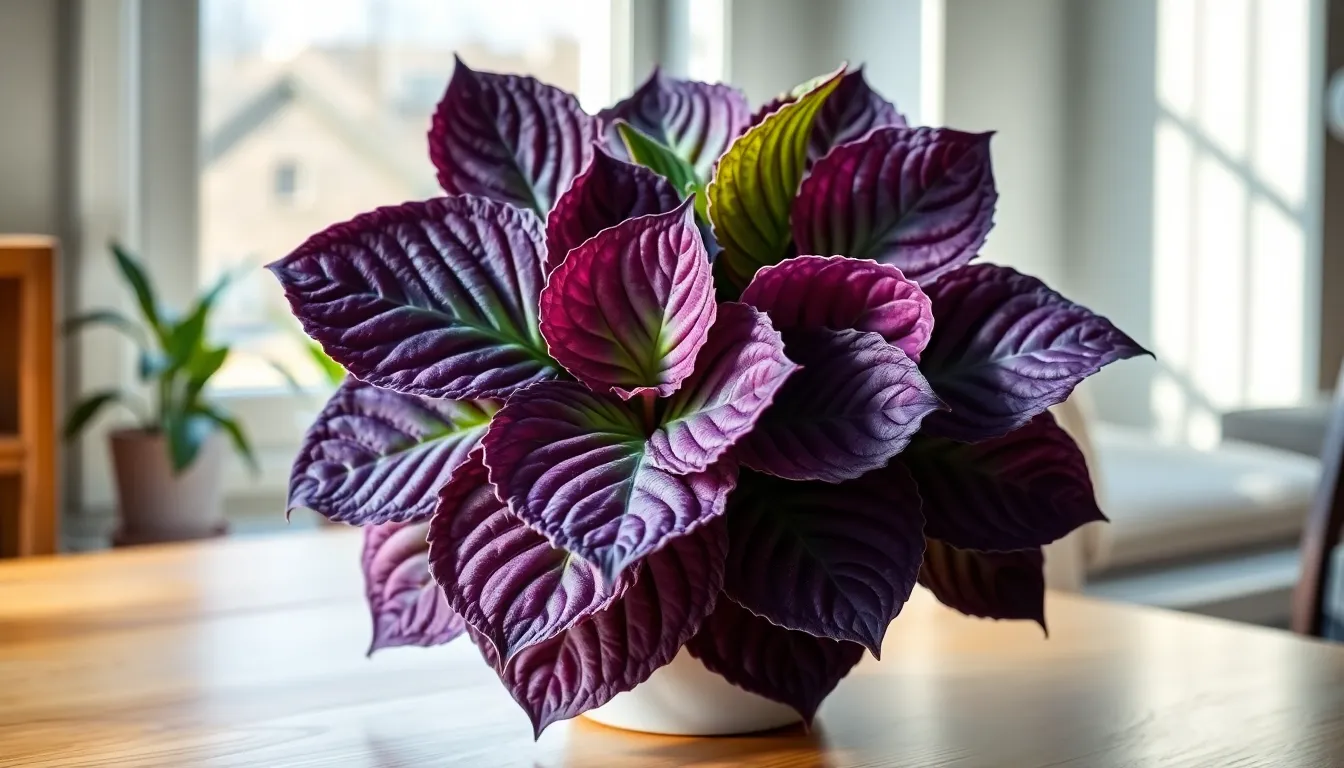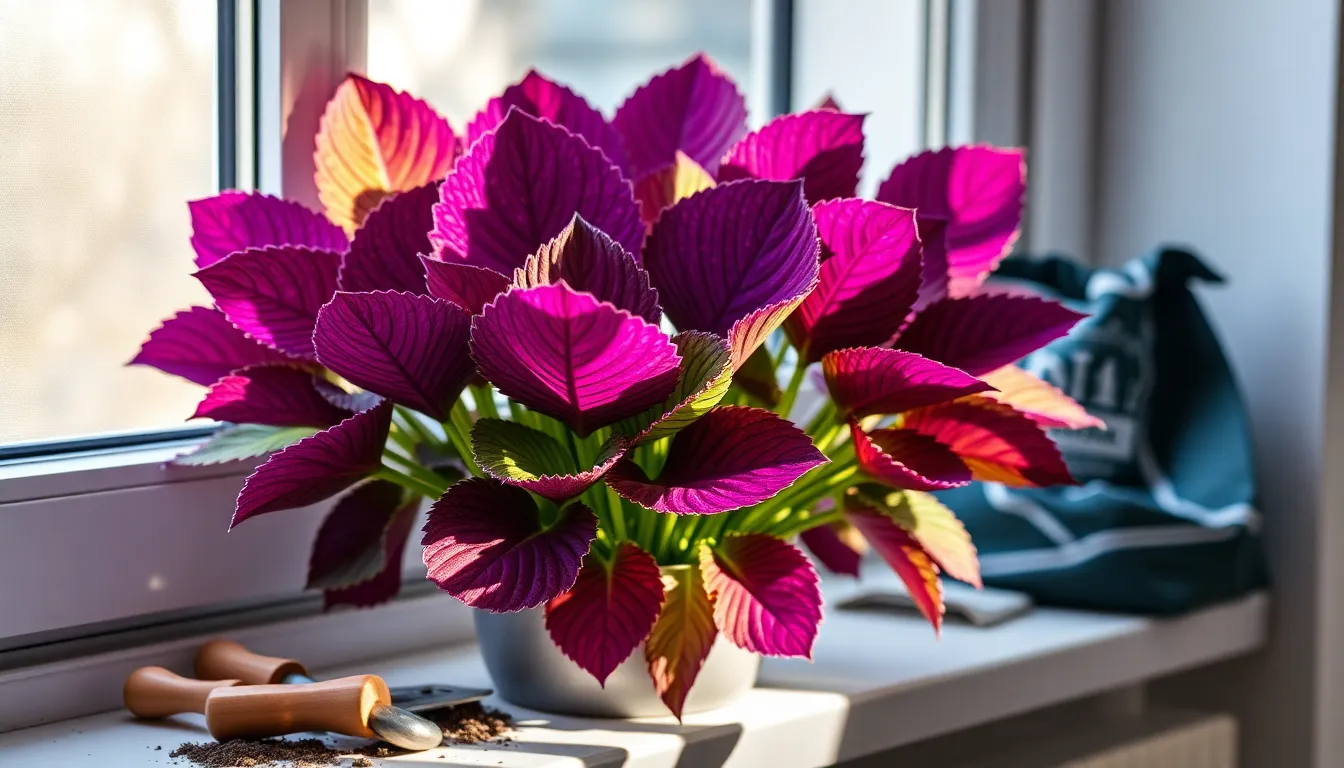Phone:
(701)814-6992
Physical address:
6296 Donnelly Plaza
Ratkeville, Bahamas.

If you think your plant game is strong, wait until you meet the purple waffle plant. With its vibrant purple leaves and unique texture, it’s like the diva of the plant world. This little beauty doesn’t just sit pretty; it thrives on attention and a bit of TLC. If you’re ready to elevate your indoor jungle, it’s time to roll up those sleeves and dive into the delightful world of purple waffle plant care.
Purple waffle plants offer a unique aesthetic with their textured leaves and vibrant purple coloration. Their distinct appearance makes them a popular choice for indoor gardening enthusiasts.
These plants exhibit thick, crinkled leaves that can reach up to 4 inches in length. Shades of purple and green adorn the foliage, creating a striking contrast. Growth typically occurs in a compact form, allowing for easy placement in various spaces. Properties like pet friendliness make them suitable for homes with pets. Resilient nature helps the plant withstand low light conditions, though it thrives best with moderate indirect sunlight. They prefer well-draining soil and consistent moisture but are sensitive to overwatering.
The most recognized variety is Hemigraphis alternata, often noted for its distinctive purple undersides. Another popular choice is the ‘Red Flame’ variety, featuring more pronounced red and purple hues. The ‘Silver’ variety features a silvery-green pattern that adds visual interest. Each variant brings something unique to the indoor plant collection. Varietal differences are often showcased in their leaf shapes and color intensity, appealing to various aesthetic preferences.

Proper care ensures the purple waffle plant thrives and maintains its vibrant appearance. Attention to light, water, and soil conditions enhances growth and longevity.
Purple waffle plants prefer moderate indirect sunlight. Direct exposure can scorch the leaves, while low light slows growth. Placing them near a west or east-facing window offers an ideal balance of brightness and protection. Indirect light helps showcase their rich purple tones. Observing the plant’s response to light aids in adjusting placement over time.
Consistent moisture is crucial for purple waffle plants. Watering them when the top inch of soil feels dry promotes healthy growth. Overwatering leads to root rot; so, drainage is essential during watering sessions. Using room temperature water prevents shock. Keeping a regular watering schedule aids in overall plant health. Monitoring humidity levels also assists in maintaining ideal moisture.
Well-draining soil is vital for purple waffle plants. A mix of potting soil and perlite or sand enhances drainage and aeration. Soil should retain some moisture without becoming soggy. Testing soil pH can ensure an appropriate range, typically between 6.0 and 7.0. Repotting every couple of years refreshes nutrients and allows for root expansion. A comprehensive soil mix supports robust growth and vibrant foliage.
Purple waffle plants propagate easily, making them popular among indoor gardening enthusiasts. Two primary methods exist: stem cuttings and division.
Cutting stems offers an effective way to propagate purple waffle plants. Begin by selecting a healthy stem with several leaves. Use clean, sharp scissors to cut a section about 4 to 6 inches long. Place the cutting in water or a well-draining potting mix. Regularly monitor moisture levels, ensuring the medium remains slightly damp. After a few weeks, roots develop, signaling readiness for planting in a pot. This method allows for quick growth and expansion of a plant collection.
Dividing the purple waffle plant serves as another viable propagation technique. Start by removing the plant from its pot, gently shaking off excess soil. Look for several distinct sections with roots and foliage. Using clean tools, separate these sections. Each division must contain at least one root and multiple leaves for the best chance of survival. Replant the divisions in separate pots filled with a well-draining mix. Water the newly potted plants thoroughly. Proper care encourages growth in the new pots, expanding the collection further.
Purple waffle plants, while hardy, can encounter several pests and issues that affect their growth. Identifying the correct problems early is crucial for maintaining plant health.
Spider mites often appear on purple waffle plants, especially in dry conditions. Small, web-like structures may indicate their presence. Mealybugs, with their cotton-like appearance, cling to stems and leaves, sucking sap. Aphids might cluster on new growth, leading to stunted leaves. Fungal gnats can become a nuisance if the soil remains excessively wet, signaling issues with drainage. Regularly inspecting plants for these signs helps catch infestations before they spread.
Insecticidal soap effectively treats spider mites and mealybugs, providing a straightforward application method. Neem oil also works well against many pests, ensuring safe use on foliage. For aphids, a strong spray of water may dislodge them. Sticky traps can help manage fungal gnat populations, reducing their lifecycle. Improving air circulation and adjusting watering practices minimize conditions conducive to pests. Regular inspections and prompt action create a thriving environment for the purple waffle plant.
Caring for a purple waffle plant can be a rewarding experience for any indoor gardener. With its vibrant leaves and unique texture it adds a splash of color and character to any space. By providing the right light moisture and soil conditions this plant can thrive and flourish.
Regular maintenance including watering and repotting ensures its continued health and beauty. Moreover the ability to propagate through cuttings or division allows enthusiasts to expand their collection easily.
By staying vigilant against pests and promptly addressing any issues gardeners can enjoy the full benefits of this stunning plant. Ultimately the purple waffle plant is not just a beautiful addition but also a testament to the joys of nurturing indoor greenery.